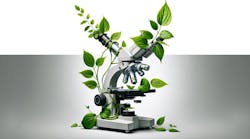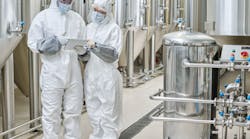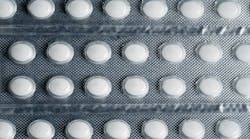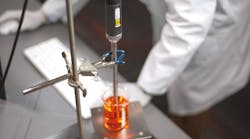Monoclonal antibodies' (mAbs) elegant specificity has catapulted them to a starring role within the world of precision medicine over the course of the last couple of decades. As is typically the case with new and revolutionary technologies, there have been fits and starts. The first FDA-approved therapeutic mAb, Orthoclone OKT3, was approved in 1986 to limit organ transplant rejection. Since 1986, more than 70 mAbs, serving either therapeutic or diagnostic purposes, have been approved. There have been many strides forward, as well as setbacks, but mAbs have grown from a small part of the drug industry to now being more than 50 percent of the overall biotherapeutic market. There’s a huge pipeline of antibodies still to be commercialized that will continue to deliver substantial market growth for years to come.
Before diving into the discussion of the benefits, challenges and exciting future of mAbs, it’s worth taking a moment to reflect on merely one aspect of the near magical intricacy of antibodies. Of course, an antibody is a blood protein produced to counteract a specific antigen, or foreign substance such as bacteria, viruses or another foreign substance detected by the body.
mAbs bind monospecifically to one antigen, one epitope, or one cell type making them incredibly useful for highly targeted therapeutic administration. Their therapeutic specificity makes them ideally suited for helping to minimize adverse side effects, especially when highly toxic drug substances must be delivered.
While the concept of mAb therapeutics is a simple one, the application of these concepts is far from easy. This paper explores some of the exciting directions mAb therapy is heading, and the challenges and enabling technologies impacting this therapeutic area.
DEVELOPMENT CHALLENGES AND PROGRESS
The development of a successful therapeutic mAb requires the identification and creation of a selective and potent molecule that performs the needed task, humanization of sequences, affinity maturation, Fc engineering to modulate effector functions, and engineering to address biophysical liabilities that would negatively impact manufacturability and/or patient effectiveness.
Arguably, animal use in the development of mAbs, as well as other protein-based, pose the most significant challenges. As it stands, understanding immunological reactions to biotherapeutics involve a complex combination of varying factors not yet fully understood, including product, disease, species, and patient-specific factors. While developers are making a great deal of progress in addressing these challenges, interspecies translational issues are still the leading drivers of attrition within mAb therapeutic development.
Given that non-human primates (NHPs) are often the only species in which a mAb binds and has the desired pharmacological effect, they have been used for nonclinical safety and toxicology testing of most antibody-based products. However, there are critical differences between primate and human physiology delivering far from perfect translation of NHP study results to human safety and effectiveness. For example, unproductive study results might manifest if the target molecule does not play a role in typical NHP physiology or plays a different role within the primate versus within a human. Study results in these situations can be of limited value for demonstrating the efficacy and safety of the treatment in humans, increasing the difficulty for developers to prove that the product is safe for human trial.
However, the great news is that substantial progress has been made to address these development challenges. Driven by emerging technologies, mouse target knockout phenotypes can be used for hazard identification in place of the NHP, or surrogate molecules can be used in rodent species to demonstrate safety and efficacy. Additionally, the use of newly developed in vitro and in silico technologies, systems pharmacology and modeling, are improving the human safety prediction and thereby improving the therapeutic mAb development process, while reducing animal use and the challenges of interspecies translation.
MANUFACTURING CHALLENGES
Although mAbs, exquisite in their specificity, can be selected for affinity, potency, Fc functionality, and biological activities, too often lead molecules have unsuitable biophysical properties that can make them very difficult to manufacture at scale. Problems can include: poor expression, solubility, promiscuous cross-reactivity, and poor pharmacokinetic profiles. Therefore, the ability to screen for and make development decisions that are in line with ultimate clinical manufacturing needs is critical to avoid the costly attrition that plagues the industry.
Given the complexity of these molecules, there are many factors that can become problematic in manufacturing. One of the most pressing challenges is maintaining the needed product stability within an often highly concentrated product. If proper stability is not achieved, and the product degrades during shipment and/or storage, patients’ safety could be at a substantial risk.
Drug developers generally strive to create mAbs that can be administered by subcutaneous injections. For many mAb-based therapies, high doses of molecules in the range of hundreds of milligrams to 1 gram are needed per dose to achieve the desired therapeutic concentration and per FDA regulation, the volume of a subcutaneous injection must be less than 1.5 mL. Therefore, many mAb formulations are at concentrations greater than 100 mg/mL. It is these very high levels of concentration that manufacturing processes problems are more likely to occur as molecules sometimes behave undesirably within these crowded conditions. For example, a highly concentrated product can present significant stability challenges and developers experience difficulty with filling because at these concentrations they are very viscous.
As mAb concentration increases to create a subcutaneous injected product, there is reduced volume available for the mAb molecules themselves. These crowded conditions can facilitate the formation of reversible non-covalent protein aggregates, with resulting increased viscosity, and corresponding problems.
The stability of high-concentration mAb preparations can be improved by the addition of excipients to prevent the formation of irreversible aggregates. Excipients, like sugars, generally prefer to interact with water molecules and are steered away from the hydration shell of protein molecules. This state increases the partial molar free energy of the denatured protein relative to the native conformation, thus pushing the protein molecules to maintain their native conformation and reducing the formation of aggregates. However, excessive use of excipients can cause other challenges such as an increase in tonicity of highly concentrated mAb formulations.
IMPORTANCE OF MAB STABILITY APPROACHES
Although stability management challenges are mentioned above briefly, addressing these challenges are so critical to mAb development that the issue warrants further discussion. The reason that both physical and chemical degradation are so critical is that the efficacy of mAb-based therapeutics is closely tied to their structural, conformational, and chemical stability.
The most common causes of physical degradation encountered during manufacturing, processing and ultimately clinical administration include excessive temperature, mechanical, and freeze/thaw stresses. The sources of chemical degradation are a bit more far-ranging in nature and commonly occur in several different ways. Chemical degradation affects the primary sequence and may also lead to significant changes in the higher order structure (HOS). Examples of chemical degradation include deamidation, oxidation, isomerization, hydrolysis of a peptide bond, clipping/fragmentation, and cross-linking.
A thorough understanding of the mechanisms and the causes of mAB degradation has allowed developers to craft various stabilization strategies including pH optimization and identifying effective buffer components to stabilize the mAb. Additionally, surfactants are useful in many mAb formulations as they can help to stabilize protein molecules from interfacial stress by accumulating in an effective manner at the interface and prevent the proteins from being partitioned. Stabilizers such as sugars and polyols are also critically important as they serve antioxidant, metal chelator, or cryoprotectant functions.
ENABLING TECHNOLOGIES FOR BOTH MFGING AND DEVELOPMENT
Both product and process development can be time-consuming activities and demand substantial exploration and experimentation. Given that speed to clinic is a huge determinant of success within this therapeutic class, much of the industry has migrated to platform approaches for discovery, product and process development, as platform usage tends to speed the development process substantially. For example, going from gene construct to IND takes less than a year, versus the two years or more typically required when undertaking a more traditional path. The good news is that mAb therapeutics lend themselves particularly well toward the application of platform approaches.
Monoclonal antibody platforms developed by several industry players have effectively channeled the many different factors required for consideration within the product and process development process – factors such as impurity management, robustness, scalability, stability, solubility, promiscuous cross-reactivity, unsuitable pharmacokinetic properties and availability of raw materials once the product makes its way to commercial manufacturing.
Also, mAb cell line development and upstream cell culture processes lend themselves to a prescribed platform approach very well. However, much of the current industry bottleneck for delivering mAb therapeutics is within the downstream processes stages; therefore, these established structures defined by the various platform providers have been particularly helpful here.
Finally, platform providers help to streamline the regulatory and quality record keeping processes which help a great deal to save time and required resources. In the end, the product discovery, development, manufacturing and regulatory predictability being facilitated by mAb platform providers is allowing industry and regulators alike to move faster and with greater consistency.
FUTURE DIRECTION
The progress that is being made to bring this highly successful class of therapeutics to market is interesting, but the opportunities that lie before us are fascinating. So, where is this class of therapeutics heading? First, the industry is simply becoming more sophisticated at creating better mAbs. The humanization of murine antibodies is now more refined, and several companies are now performing in silico optimization of complementarity-determining regions (CDRs) or T-cell epitope avoidance to minimize immunogenicity. Yeast display is another new technology that can avoid some of the immunogenicity problems of traditional mAb production. Next-generation transgenic mice with a more complete complement of human antibody genes are also being used to develop a new generation of fully human monoclonal antibodies.
Moving beyond simply better mAbs, many developments to extend the capabilities and performance of mAbs are in full motion – antibody-drug conjugates (ADC) as one example. While only four ADCs have been approved by the FDA at the time of this writing, this is a highly promising extension of mAb application. Utilizing the specificity of mAbs, a cytotoxic agent is covalently linked to the mAb to deliver a highly targeted payload. It is easy to visualize this exciting possibility for oncology treatments in which the mAb selectively binds to a cancer-associated antigen, with only limited impact to healthy cells, to deliver the cytotoxic agent to the target cells. In other words, highly toxic payloads are delivered to cancer-causing cells while greatly reducing the negative impacts to healthy cells as traditional chemotherapy drugs do. While the application for cancer therapies is easy to visualize, ADCs are showing great promise within a range of disease states including hematology, heart disease, autoimmune disorders, and others.
Another novel mAb approach is the creation of bispecific antibodies (bsAbs). These molecules are designed proteins capable of simultaneously binding and neutralizing two different epitopes on the same antigen. Because of this property, bsAbs can serve as mediators in redirecting immune effectors and cytotoxic agents like T-cells to tumors or to infecting organisms such as bacteria.
Yet another extension of traditional mAb molecules are Fc fusion proteins which are created by joining the coding sequence for the Fc region of a mAb to the coding sequence for another protein. Because many biologically active peptides and proteins have a short half-life and are therefore rapidly cleared by the kidneys, the advantage of the Fc region is that it can bind to the neonatal Fc receptor to extend the half-life of antibodies. Currently, seven Fc fusion proteins are approved and on the market, with quite a number more in the development pipeline.
Given that more than 50 percent of the biologics on the market today are mAbs, and that there are many more products in the current pipeline, the importance of this class of drugs cannot be overstated. Over the last three decades, much progress toward improving the humanization of mAbs, thereby improving efficacy and reducing immunogenicity, has been made. Now, enabling technologies, much of which is being packaged by platform providers, is further creating paths for quick and effective drug and process development. Finally, there are many highly promising extensions of developed mAb technology that will leverage the tremendous targeting specificity mAbs enable, while greatly extending their capabilities.
Sources:
"Evolving Trends in mAb Production Processes," Abhinav A. Shukla, Leslie S. Wolfe, Sigma S. Mostafa, Carnley Norman, March 2017
"Regulatory Considerations for the Development of Novel Antibody-Related Products," Qing Zhou, PhD, Marjorie Shapiro, PhD, American Pharmaceutical Review, April 2016
"Moving Beyond Monoclonal Antibodies," Cynthia A. Challener, Ph.D., Pharma's Almanac, October 2017
"Commercializing High-Concentration mAbs," Nilanjana Das, PhD, BioPharm International, November 2016
"Challenges and Opportunities for the Future of Monoclonal Antibody Development: Improving Safety Assessment and Reducing Animal Use," Fiona Sewell, Kathryn Chapman, Jessica Couch, Maggie Dempster, Shawn Heidel, Lise Loberg, Curtis Maier, Timothy K. Maclachlan, Marque Todd & Jan Willem van der Laan, June 2017
"Engineering Antibody Therapeutics," Mark Chiu, Gary Gilliland, June 2016
"Developments and Challenges for mAb-Based Therapeutics," Sumit Goswami, Wei Wang, Tsutomu Arakawa, Satoshi Ohtake, Antibodies, May 2013
"The Expanding Field of Antibody-Drug Conjugates," ADC Review, January 2018
"The History of Monoclonal Antibody Development - Progress, Remaining Challenges and Future Innovations," Justin Liu, Annals of Medicine and Surgery, September 2014
"5 Advances and Challenges in the Development of Antibody-drug Conjugates for Cancer Therapy," Sanjay Jain, ENVIGO blog, April 2017
[javascriptSnippet]





